As a follow-on to the previous post, here’s some random tips, observations and thoughts on gear:
TRAINING FAILS
I continue to be astonished by the lack of basic life skills among so many people out on the road camping, clamping, road tripping or traveling. So much to say on this, so little time, so I’ll chunk it into three categories I saw the most egregious fails:
- Land Navigation
- Shitting In The Woods
- Basic Hygiene
LAND NAVIGATION
In a world orchestrated by smartphones, Google Maps, and GPS, it’s hard to believe how many people venturing out camping or traveling are unaware that there are significant portions of the United States with no or very poor cellular coverage. No cell, no Google Maps, no GPS. And so many people can’t read a road map and orient it in direction of travel, let alone a topographic map and a compass.
I run a smartphone with Google Maps and Waze as my go-tos for road travel. I back that up with a national paper map atlas that has separate sections for each state. In the states I travel the most, especially off road I supplement those with a Delorme state specific map, which has the state broken down into separate topographic maps.
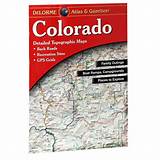
I wear a tritium wrist compass, which serves as my moral compass and a quick check while driving as to direction. It’s the US military issue Cammenga, but I’ve been badgering the CEO of Marathon Watch (an Israeli IDF SOF veteran) to kick down and issue their wrist compass with tritium instead of the Maraglo illumination. We’ll see if he gives in or not. I have a top shelf Suunto International Global compass, and I have a Garmin GPS InReach. Those two items live on my hiking rig which stays within reach while I’m adventuring (see below in GEAR). I also stop, when traveling through National Forests, and pick up paper copies of the years current Forest and Park Service road maps which show where dispersed (free) camping is allowed and where you can drive your street vehicle legally down fire trails and other access points.
I’ve had occasion to use all my maps simultaneously because as any old hand in the woods will tell you, maps are not always updated, terrain especially around roads can change, and several perspectives are often useful when sorting out Where The F**K Am I becomes imperative.
All of this presupposes one can read a simple street or road map. Remember, the top of the map is NORTH. If you orient your map to your direction of travel, you may have to read the map upside down or sideways. Figuring direction on an established road isn’t too hard — look for the signs like East 90, or West 90. A small cheap compass makes it fast and easy. Check to make sure you’re headed in the direction you think you are by identifying a landmark on your route (intersection, road branching, named feature on the map like a historical site) and when you pass it, plant your finger on the map. Now you’re found. Stay that way.
Detailed land nav for off road and off trail is too long for me to get into, and there’s no shortage of internet bandwidth on it. Go search and learn so that SAR doesn’t have to search for you.
And buy paper maps and a simple compass!
HOW TO SHIT IN THE WOODS
Seriously. The human fecal problem in remote trailheads has gotten to the point that the Forest Service and the Park Service have to issue alerts about fecal contamination and animals getting into human feces. You know where the derogatory term “shit heel” comes from? It was directed at people too poor to afford a privy and too stupid not to position themselves so that when defecating they didn’t smear their heels (and sometimes the back of their legs, or for the really impaired, fill their pulled down pants). I’ve personally witnessed people at a pristine distant wilderness trailhead look around in near panic and declare “Where’s the toilet?”
Uh…this is WILDERNESS, as in you’re on your own, including making potty?
Here’s a suggested protocol for doing Number 2 in the woods:
- Have a shovel, trowel, or sturdy stick.
- Wet wipes are your friend.
- A double bagged zip-lock bag.
- Locate a suitable (private, at least 100 yards from water and preferably the same from where you sleep if in bear country. Bears love to sniff human poop and sample it for bits that slipped through your intestinal tract. Then they come looking for the source. Don’t be lazy, or you’ll end up being eaten like this unfortunate just yesterday: CLICK HERE
- At your chosen location, scrape off all duff, leaves, etc into a 8×8 inch square. Then using your stick, trowel or shovel, dig out the top turf if that’s the terrain, or the top layer of dirt, and leave it to one side. Then dig down at least 8 inches, stacking the dirt to one side.
- PREPARE TO DUMP!
- Lower your pants and underpants down around your ankles. If you have flexibility issues going into full squat, take up yoga, or dig next to a rock or tree or shrub you can hold onto for balance. Or find a log or rock to sit on, but make sure your feces fall clear and you don’t end up sitting in them. PULL your pants FORWARD away from your rectal region. Steady yourself, stare straight ahead to maintain balance, and let the Universe flow through you. If you’re unused to the squatting position, you may be pleasantly surprised at how fast you get through with your business.
- Use your wet wipes to clean yourself, AND PUT THEM ASIDE NEXT TO THE HOLE. DO NOT BURY THEM, EVEN IF THEY SAY BIODEGRADABLE.
- When you’re clean (and check your heels and the back of your legs, so that you don’t earn the dread monicker of “Shit Heel”) then stand and carefully pull up and secure your pants, making sure you don’t drag them through any feces that may have missed center hole and hit the side.
- Put the used wet wipes or toilet paper and seal inside the double bagged zip lock to be packed out.
- Fill the hole, using the dirt you excavated. As the last step, replace the sod, turf, or top layer of soil
- Then replace the duff, leaves, whatever you moved away.
- Leave no trace.
It used to be we used toilet paper, and charred it to kill the smell and left it in the hole. With fire restrictions etc. it’s easier to just pack it out. Nothing nastier than coming into a pristine site in the wilderness and find piles of human feces with paper stuck in it sitting right on top of the soil. Human feces breed human specific germs. And attract animals including bears.
Don’t be that guy or gal.
BASIC PERSONAL, KITCHEN AND CAMP HYGIENE
While a great part of being outside is the joy of getting dirty, it becomes a health risk if you stay out for more than a day or three. Fungal infections in the groin area from sweat and sweaty garments, cysts, infected cuts…all realities of the living outdoors as opposed to visiting for a day or three. If you have water and a small pot, you can do a credible job of cleaning yourself with a rag or bandana or dirty item of clothing. Since a lot of people don’t do sponge baths, or haven’t cared for an infant, here’s a suggested protocol for washing yourself:
- Set up your pot and water (you can warm it on your stove or fire if you’re fussy) and have your designated wash rag handy.
- Soap is good but optional.
- Start with your face, head, and neck.
- Then your hands and arms.
- Chest and back with special attention to arm-pits.
- Feet and legs.
- Genitals, crotch region and last but not least, buttocks and buttock fold.
The sequence is logical if you think about it. Would you scrub your nasty 3-day sweaty ass and then wash your face with the same rag? No.
I dip the rag into the water and wring it each time, for the same reason. Cleanest water for face, head, neck, hands and arms, and as it gets progressively dirtier finish up with butt scrubbing.
In the kitchen, just boil ALL your utensils after each meal. It softens any food residue making it easy to get out and sterilizes it as well. i also dry them off after scraping/scrubbing any residue into a plastic bag (bears, again) with an antibacterial wet wipe. Strain the water through a paper towel and put the towel into your trash bag; that eliminates tiny bits of food that leave scent around your area. And the longer you’re out, the more critical cleanliness in food preparation becomes. Diarrhea or food poisoning can kill you from dehydration and electrolyte imbalance.
NOTE: for the survivalists, it also eliminates any trace of human presence in the area once you leave. Except to a skilled human tracker, and there are a few of us around yet.
Keep your camp clean and tidy. Not only does it make for efficient use of your gear and space, it also means you can break down quickly when you may be tired after some time out in the woods. A clean camp discourages animals and in places where Rangers and so on check, expensive fines for leaving food or food scraps around.
GEAR FOR THE GEARHEADS
My most used gear:
- Spyderco folding knife, lost in the Wind River!!!
- A 100% wool blanket
- Both camp stoves
- Pour over pot for exquisite coffee
- Thermal mug
- Hiking Rig (Hill People Gear)
- Condor Scout Ax
- Tent, Cot, Sleeping Bag
- Suunto Compass
- Cellphone
- Paper map set carried in HPG Attache
HILL PEOPLE GEAR HIKING RIG
I’ve been a HPG consumer, fan boy, and Ambassador pretty much since they started up 10-12 years ago. I own or owned almost everything they make over the years, and have tested it all rigorously. Besides it’s ubiquity in my personal gear, I’ve made it a point to send samples and detailed reviews to a number of elite units I work with who’ve bought their gear. The rig illustrated below is my go-to hiking/off-road rig. It stays packed and I can grab it and go for half a day with what’s on it, and if I add some food bars and a water purifier, all day and then some. It combines the HPG Kit Bag with the Recon Harness, which is a MOLLE panel back piece that holds a 2-3 quart water bladder. I go with the 2-quart because I find it balances best with the load I keep packed in it.
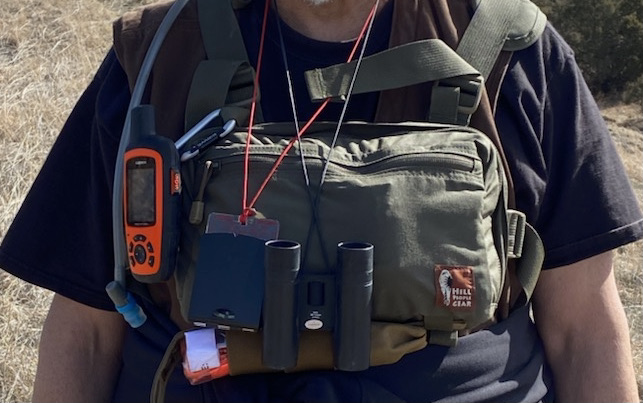
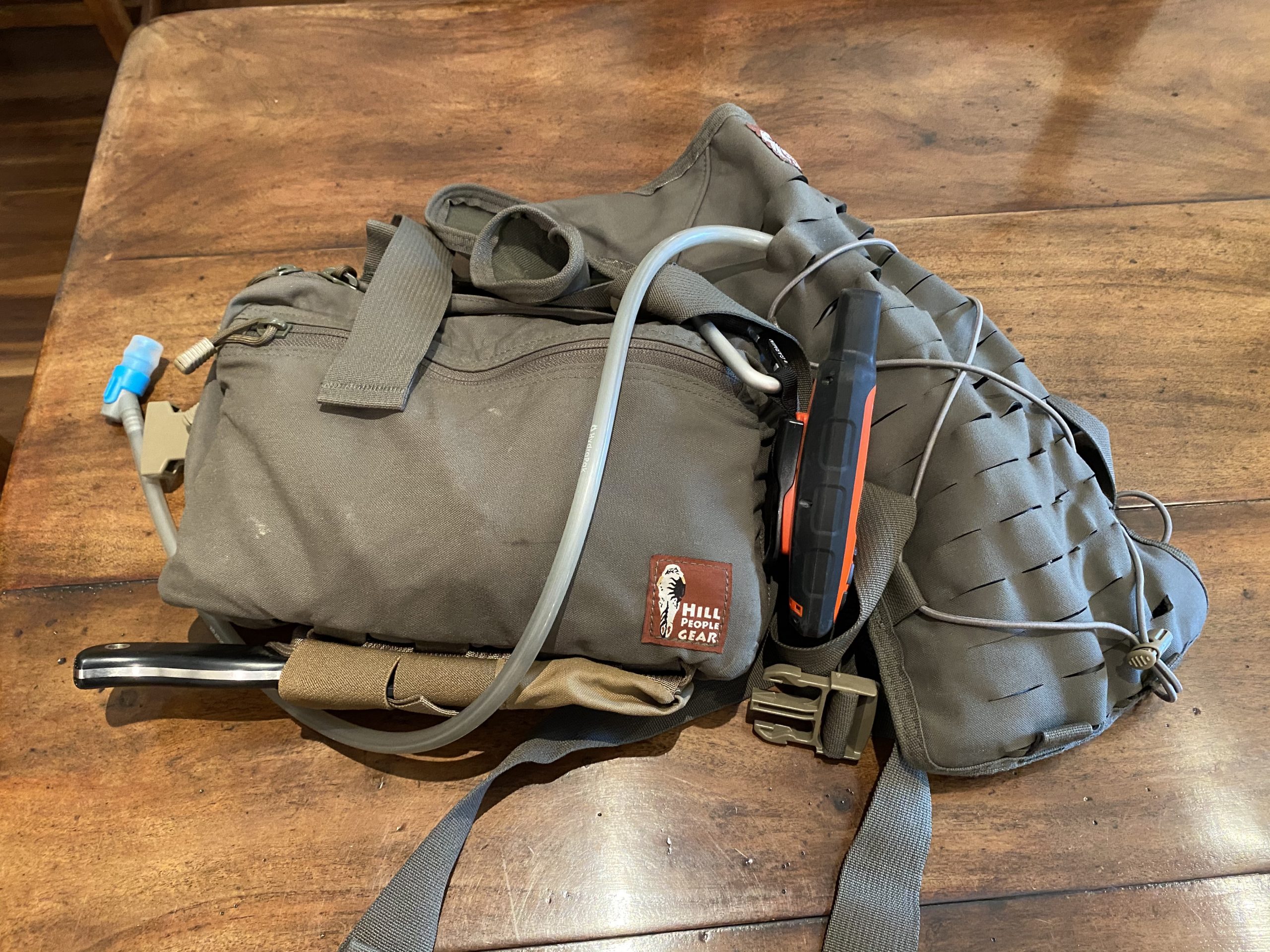
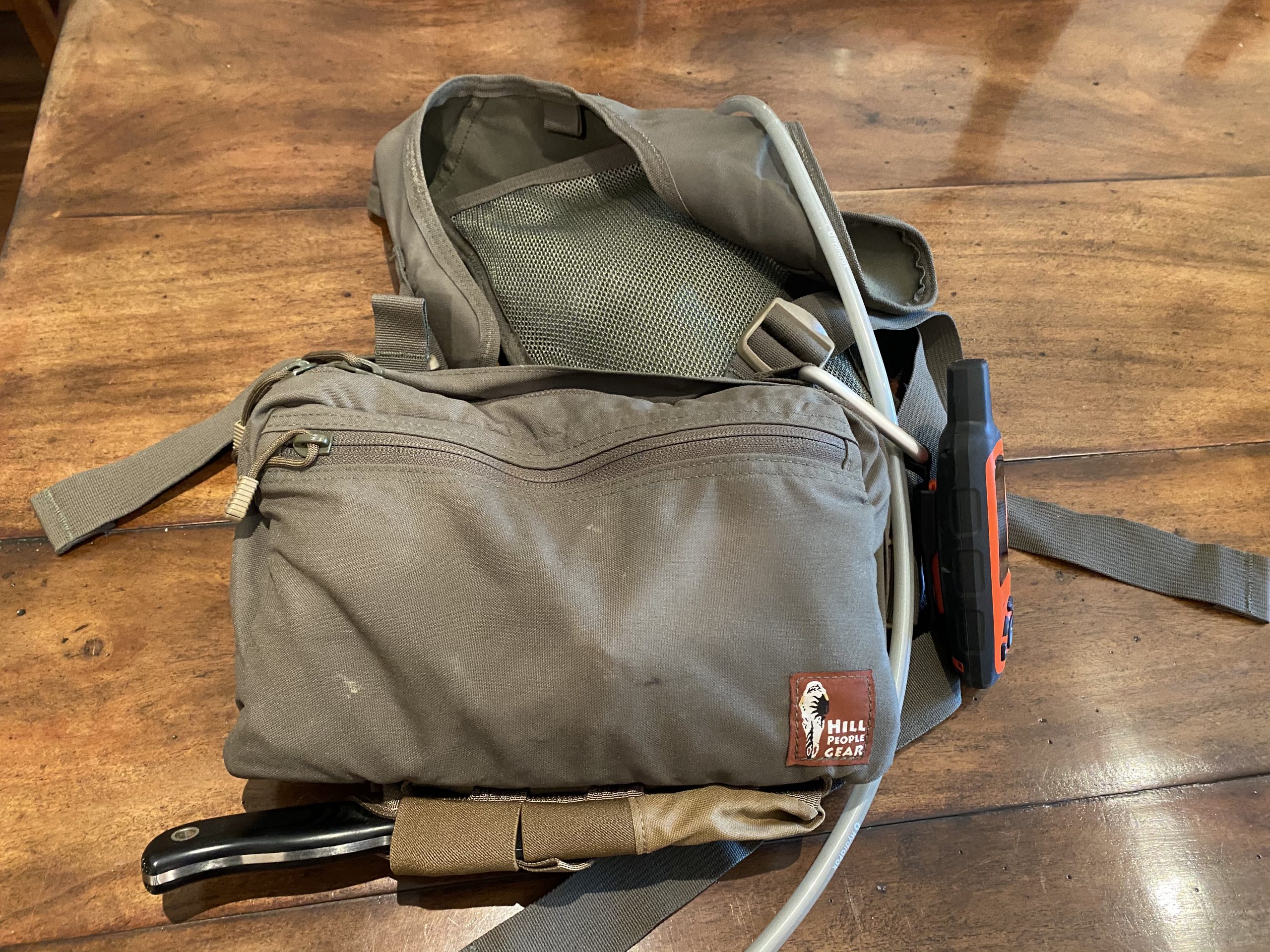
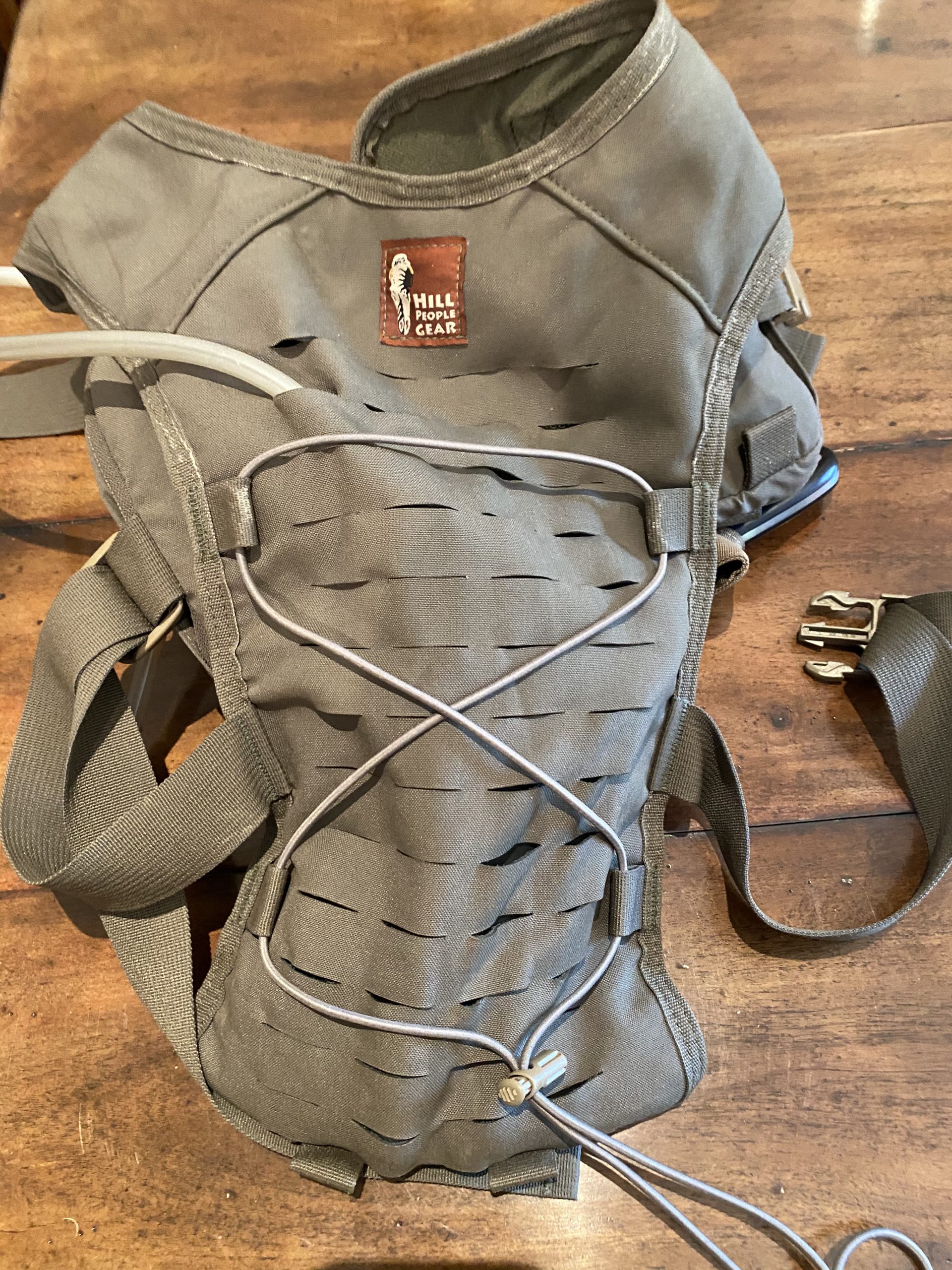
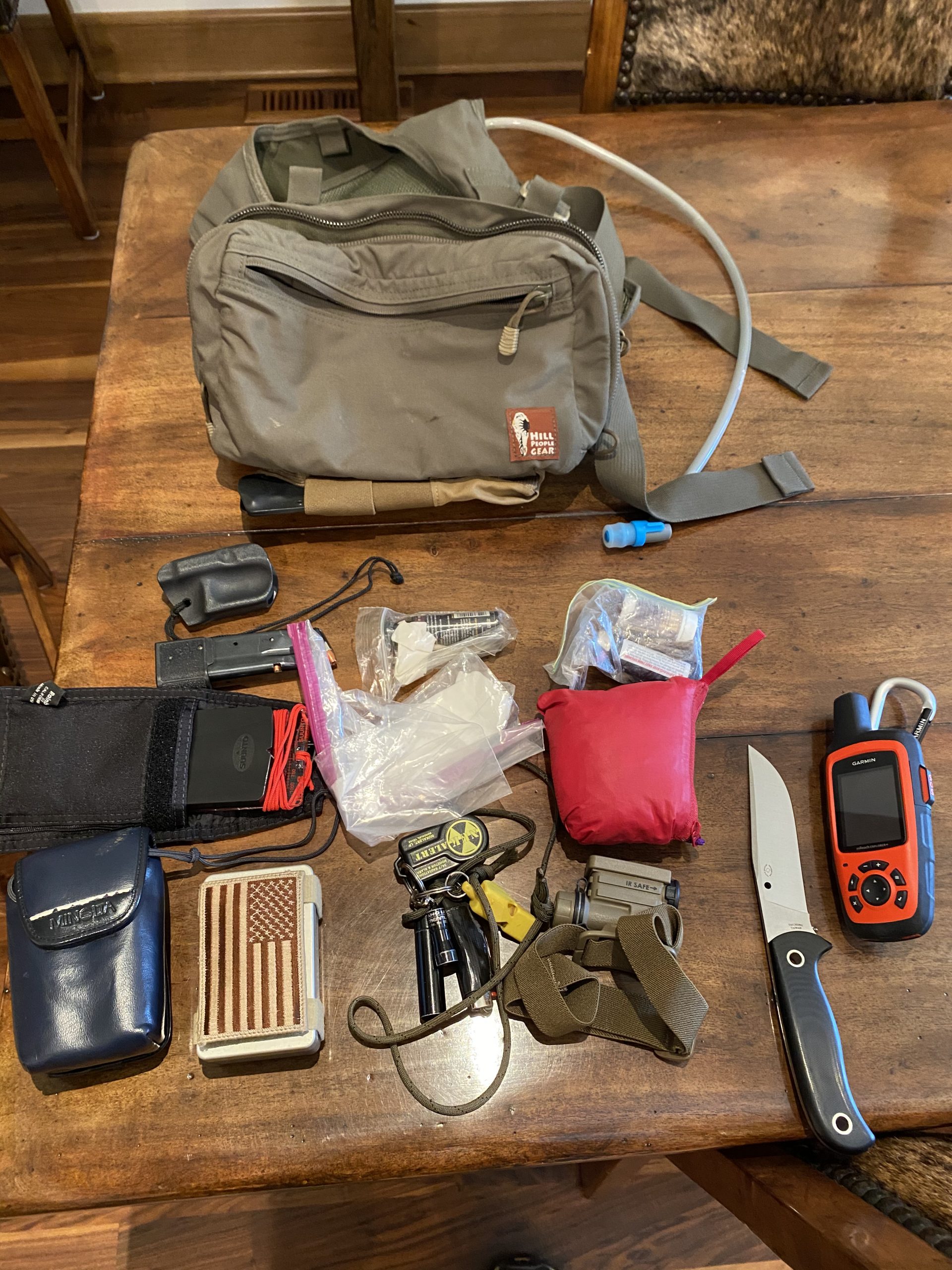
And since I know the gear heads are clamoring, here’s the list, starting at the top and moving left to right:
- HPG Kit Bag with tourniquet sheath repurposed as a knife sheath for the Spyderco Bradley Bowie
- MIC holster for securing inside pistol pocket
- Spare magazine
- Weapon maintenance kit (CLP, pipe cleaners, patches)
- Fire Kit (NATO waterproof matches, tinder, two Bic Lighters, tarred twine
- Suunto MC-2G Global Compass (International needle) in padded case
- Toilet paper/wet wipes in plastic zip lock bag
- GoLite ultra lightweight wind shirt
- Spyderco Bradley Bowie Bushcrafting Knife (great fighter, too, live in the hand)
- Garmin In-Reach Sat-Com/GPS — rescue beacon that includes ability to text via satellite, also functional GPS. Subscription of $11.95 a month gets you texting capability from anywhere in the world, as well as the ability to configure your rescue/distress package (need a tow truck in Death Valley, or a helicopter lift off a road in Colorado? hit the button and tell the 24/7/365 Rescue Center what you need. If you just hit the button they dispatch the closest package to you. For us partially paralyzed senior citizens with heart disease, stroke and mobility issues out humping the Continental Divide, it’s a great security blanket.
- Minolta 10x compact binoculars
- Solkoa Military Issue Personal Survival Kit
- Neck kit: Radiation detector, rescue whistle, micro flashlight, Mini Bic Lighter in rubber sheath that doubles as tinder, P38 can opener, Pill Vial that contains rolled up cash,
- Streamlight Military Head Lamp: multiple lamps and power setting, includes IR
That’s it! Enjoy and please do check out HPG and Spyderco — they are both way over-represented in my personal gear choices!
Hill People Gear: https://hillpeoplegear.com
Spyderco: https://www.spyderco.com

